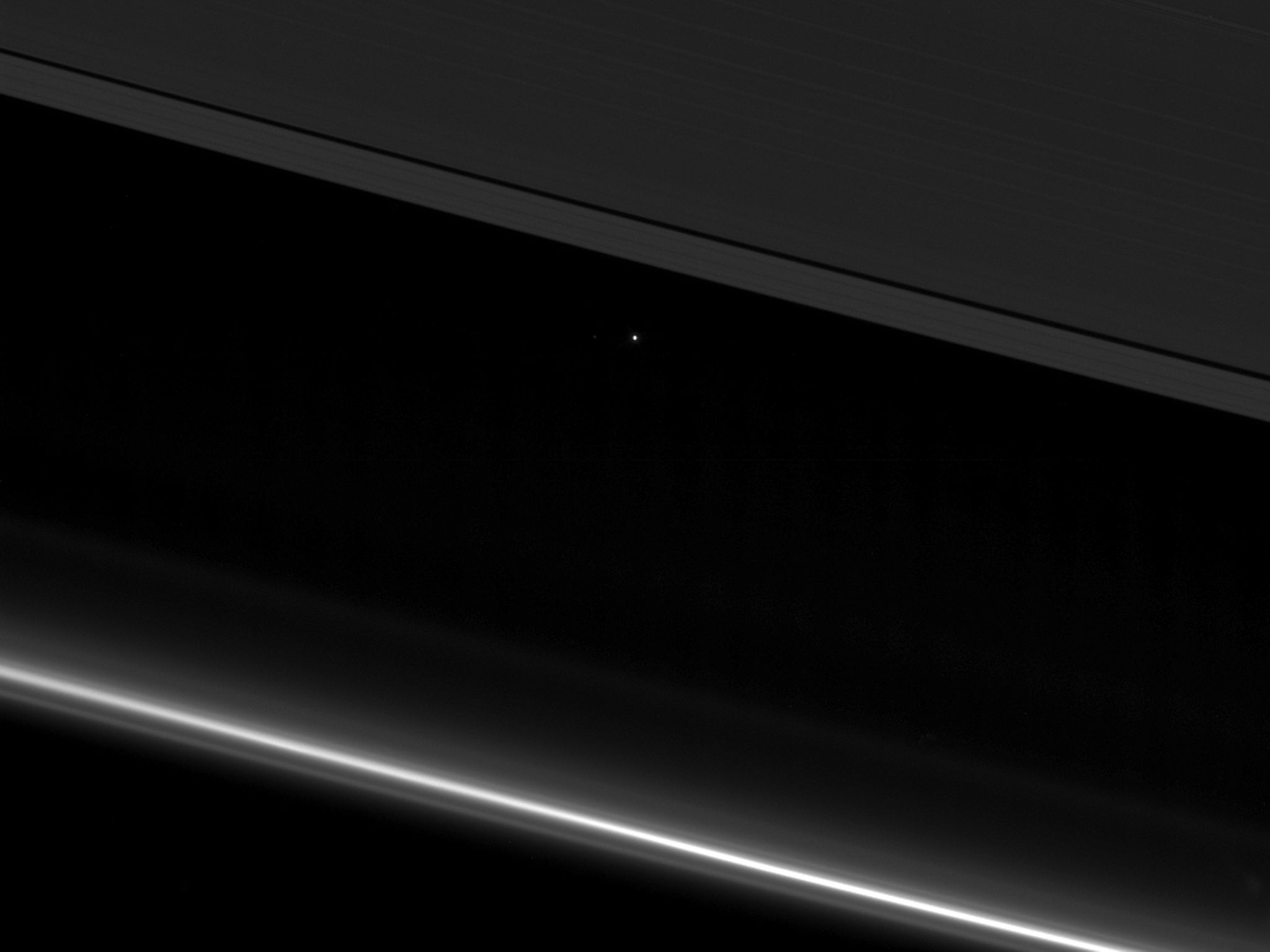Image from NASA's Cassini spacecraft shows Earth between rings of Saturn
Spacecraft captures image more than 870 million miles away from Earth

Your support helps us to tell the story
From reproductive rights to climate change to Big Tech, The Independent is on the ground when the story is developing. Whether it's investigating the financials of Elon Musk's pro-Trump PAC or producing our latest documentary, 'The A Word', which shines a light on the American women fighting for reproductive rights, we know how important it is to parse out the facts from the messaging.
At such a critical moment in US history, we need reporters on the ground. Your donation allows us to keep sending journalists to speak to both sides of the story.
The Independent is trusted by Americans across the entire political spectrum. And unlike many other quality news outlets, we choose not to lock Americans out of our reporting and analysis with paywalls. We believe quality journalism should be available to everyone, paid for by those who can afford it.
Your support makes all the difference.A new image from NASA’s Cassini spacecraft shows the Earth between the rings of Saturn.
A small point of light can be seen between the icy rings and although it isn’t possible to tell from the image, the part of Earth facing Cassini in the photo is the southern Atlantic Ocean.
The spacecraft captured the image more than 870 million miles away from Earth. A very faint dot is also visible to the left of the bright speck, which is the Earth’s moon.
The Cassini spacecraft was launched 20 years ago and for its final mission will be sent into Saturn’s atmosphere.
After more than 12 years of exploration the probe’s propellant tanks are almost empty but in its final days it will continue to send pictures and data back to Earth.
Cassini has so far helped to discover some of Saturn’s moons and also learned that all the conditions for life to exist thrive in the oceans of Enceladus.
It will eventually break apart and melt as it enters Saturn’s atmosphere and will burn up like a meteor.
Saturn is the second-largest planet in the Solar System after Jupiter and has 62 confirmed or potential moons.
Join our commenting forum
Join thought-provoking conversations, follow other Independent readers and see their replies
Comments